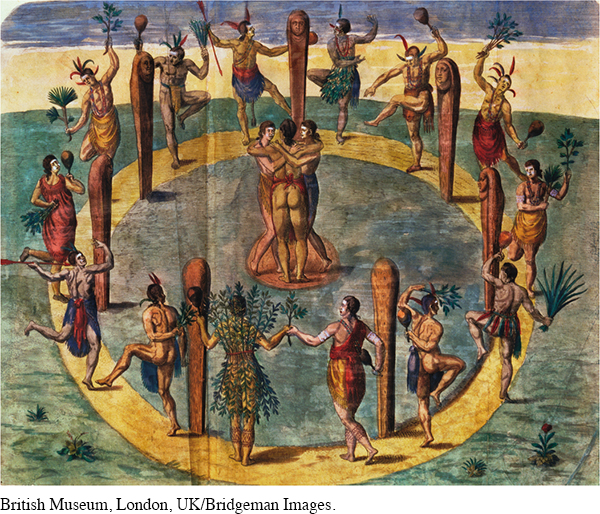The American Promise: Printed Page 47
The American Promise, Value Edition: Printed Page 42
The American Promise: A Concise History: Printed Page 51
Europe and the Spanish Example
The lessons of sixteenth-
France and England tried to follow Spain’s example. Both nations warred with Spain in Europe, preyed on Spanish treasure fleets, and ventured to the New World, where they too hoped to find an undiscovered passageway to the East Indies or another Mexico or Peru.
In 1524, France sent Giovanni da Verrazano to scout the Atlantic coast of North America from North Carolina to Canada, looking for a Northwest Passage (see Map 2.2). Eleven years later, France probed farther north with Jacques Cartier’s voyage up the St. Lawrence River. Encouraged, Cartier returned to the region with a group of settlers in 1541, but the colony they established—
The American Promise: Printed Page 47
The American Promise, Value Edition: Printed Page 42
The American Promise: A Concise History: Printed Page 51
Page 48English attempts to follow Spain’s lead were slower but equally ill fated. Not until 1576, almost eighty years after John Cabot’s voyages, did the English try again to find a Northwest Passage. This time Martin Frobisher sailed into the frigid waters of northern Canada (Map 2.2). Like many other explorers mesmerized by the Spanish example, Frobisher believed he had found gold. But the tons of “ore” he hauled back to England proved worthless, and English interests shifted southward to the giant region on the northern margins of New Spain.

English explorers’ attempts to establish North American settlements were no more fruitful than their search for a northern route to China. Sir Humphrey Gilbert led expeditions in 1578 and 1583 that made feeble efforts to found colonies in Newfoundland until Gilbert vanished at sea. Sir Walter Raleigh organized an expedition in 1585 to settle Roanoke Island off the coast of present-

The American Promise: Printed Page 47
The American Promise, Value Edition: Printed Page 42
The American Promise: A Concise History: Printed Page 51
Page 49REVIEW How did Spain’s conquests in the New World shape Spanish influence in Europe?